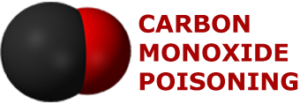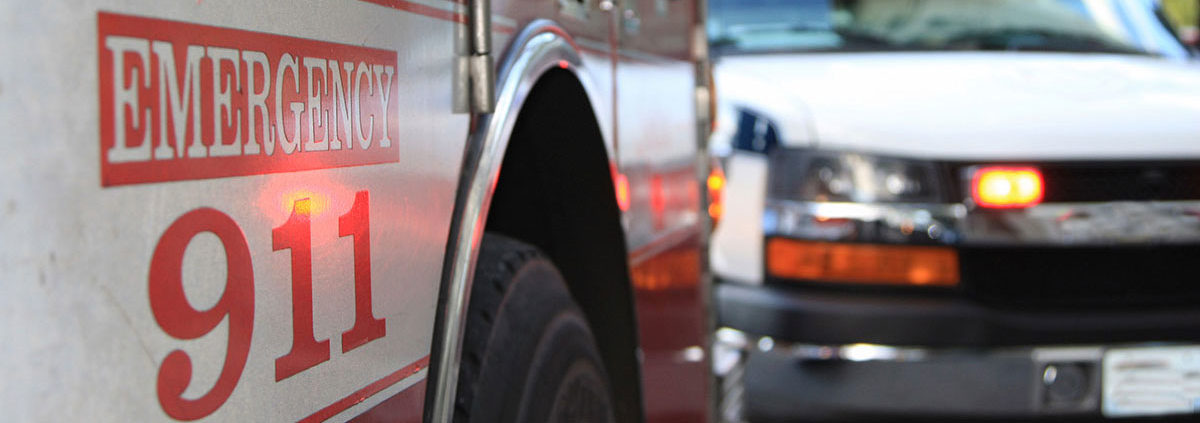Carbon Monoxide Disables 100 times More than it Kills
This website is a comprehensive explanation of carbon monoxide poisoning, what treatment is needed and who needs to be sued for justice.
By Attorney Gordon Johnson
If you are here because you have survived a carbon monoxide poisoning, there is much you need to know. We have the answers. If you are here because you or someone you love is seeking compensation, seeking justice for a carbon monoxide poisoning (also called CO), we can help.
$120 Million for the Survivors of Carbon Monoxide Poisoning.
Click here for the list of our million dollar plus results. If you are here because you think you may be being poisoned and urgently need to figure out whether what you are feeling is from CO, evacuate immediately.[1]
Most Comprehensive Treatment of Carbon Monoxide Poisoning
This website, carbonmonoxide.com is the most comprehensive treatment of CO poisoning on the internet.
- We have built it in layers.
- We have built it around answering questions.
- We have built it about providing qualitative advice.
- We have built it so that you who have been poisoned know what you are feeling is a real organic disease process; that treatment and compensation are available.
Carbon Monoxide Poisoning is Hard to Detect
What makes poison so dangerous is the riddle of its onset, the disguise of its effect. Poison, almost by definition, doesn’t reveal its identity until it is too late. CO is a poison, and like other dangerous toxins, even emergency room care and diagnosis may not discover it– until the damage has been done.
Thus, it is necessary to follow strict precautions to prevent carbon monoxide poisoning. In order to do so, we must increase awareness about CO.
How Is CO Formed?
To create heat, and its corollary–mechanical force from heat–there must be combustion, by its common name, fire. For combustion, it is necessary for carbon to oxidize. Thus, fossil fuels are mixed with oxygen, to create heat and energy which propels not just our industrialized world but the human body and all life. The C atom carbon binds with the O atom oxygen, to create carbon dioxide CO2 and water vaper, H2O. It is the cycle of life, with plants then grabbing the carbon atom out of the CO2 in the air to create plant matter and releasing back into the air O2 for animals to breathe. When combustion goes awry, carbon monoxide, CO, replaces life-giving carbon dioxide molecules, becoming one of the universe’s most dangerous substances. Carbon monoxide is so toxic because it takes the place of oxygen in our blood, while being odorless, colorless, and deadly.
CO Poisoning is About More than Death
Worldwide, CO is the number one cause of death from unintentional poisoning. In the United States, for every person who dies, there may be as many as 100 who survive after getting medical treatment for carbon monoxide poisoning. The CDC’s website states that for every death, there are 250 people treated for CO.[5]
Thus, as we consider an in-depth treatment of CO poisoning, it is not the headline catching deaths we will focus upon, but the tens of thousands of people who survive CO poisoning with lasting permanent residuals. At the top of the list of those residuals is brain damage.
Carbon Monoxide Law is All We Do
The question arises as to why an attorney, and not a neuroscientist or mechanical engineer, is writing this treatment. Like most things that stray into the medical/legal area, carbon monoxide poisoning involves so many interrelated disciplines that nearly no one area of expertise has a comprehensive feel for the entire topic. I came to the field of carbon monoxide poisoning from a 20-year career of proving invisible brain injuries. For over 20 years before my first CO case, I had been listening to those who survived brain injury recount the significant changes in mood, behavior, and cognition they struggled with daily. A leading researcher in carbon monoxide poisoning thought my brain damage expertise would have value to carbon monoxide survivors. At his suggestion, I started doing carbon monoxide personal injury cases.
This webpage is a comprehensive treatment of the science, the medicine and forensics of carbon monoxide poisoning. By forensics we mean litigation against wrongdoers of the survivors of CO poisoning. While much of this treatment might apply to cases where someone died from carbon monoxide poisoning, this book is focused on understanding and representing those who survive, not those who die. While death cases involve some of these same issues, the complicated part of survivors’ cases is proving the existence of permanent brain damage. This is made even more difficult when patients are discharged from the hospital with less than a day of medical treatment. In death cases, the autopsy solves most medical questions.
A starting point before we turn to a more in depth treatment of each topic:
PPM versus COHb levels.
- Carbon monoxide indoors. CO in indoor air (often referred to as ambient air) is measured in terms of parts per million, such as 70 PPM, which is the lowest range that will trigger a standard carbon monoxide alarm.
- Carbon Monoxide in the Blood. CO in the blood is technically called carboxyhemoglobin (COHb). CO in the blood is measured in terms of a percentage of COHb, such as 10% COHb. The concentration of COHb that the standard carbon monoxide alarm is designed to prevent in an adult male is 10% COHb.
Lawsuits for Carbon Monoxide
My last introductory comment is about fault and the need for litigation after carbon monoxide poisoning events. CO should never exist in indoor air. A normal indoor air level for carbon monoxide is zero. I have a portable low level carbon monoxide detector with me almost all the time. It almost always reads zero. If even 10 ppm CO shows up in indoor air, something has gone wrong and surely someone is at fault. CO does not innocently happen. Our buildings have been designed to assure that it does not. If CO is measurable inside, something went wrong, and a forensic inquiry should pinpoint the person or entity to blame.
Ascertaining blame is important. The purpose of our civil justice system is not just to compensate those who have been harmed by wrongful conduct of others. It is also to deter similar wrongful conduct in the future. If a forensic determination of what went wrong is not done, that CO tragedy will be repeated. Without the threat of litigation, the incentive to make our world safer would be reduced. That need is more important than ever with the Federal government and Federal Courts doing less and less to regulate and deter business and corporate wrongdoing.
The plaintiff’s case–the plaintiff lawyer–is the last clear chance to eliminate this deadly threat. CO poisoning causes permanent brain damage in at least 40% of those who survive a 10% COHb event. This book is about taking that threat seriously. My first goal is to assure just compensation for those who have suffered permanent alteration of who they are. My second goal is to deter these avoidable casualties by holding those responsible accountable.
Next – Symptoms of Carbon Monoxide Poisoning
Frequently Asked Questions About Carbon Monoxide
Brain Damage from Carbon Monoxide Poisoning
[1] If your CO alarm is going off, GET OUT OF THE HOUSE.
Don’t call our 800 number. Don’t call 911 until you are out of the house. The longer it takes to get out of the house, the more carbon monoxide you are going to breath. The more CO you breathe, the higher the carbon monoxide concentrations in your blood will be. CO in your blood can cause brain damage and DEATH. Yes death. You can become aware that you have carbon monoxide poisoning one moment and be unconscious the next.
Drop Where you Stop a Real Risk if CO Alarm is Going Off
In the most serious cases of CO poisoning, there is very little time between awareness of the danger and loss of consciousness. Do not wait to call 911. The unconsciousness can happen that quickly. Evacuate the premises immediately.
See U.S. CPSC Proposed Rule on Portable Electric Generators, October 2016, Docket No. CPSC-2006-0057 Safety Standard for Portable Generators page 9: Carbon monoxide is a colorless, odorless, poisonous gas formed during incomplete combustion of fossil fuels, such as the fuels used in engines that power portable generators. The initial effects of CO poisoning result primarily from oxygen deprivation (hypoxia) due to compromised uptake, transport, and delivery of oxygen to cells. Carbon monoxide has a 250- fold higher affinity for hemoglobin than does oxygen. Thus, inhaled CO rapidly enters the bloodstream and effectively displaces oxygen from red blood cells, resulting in the formation of carboxyhemoglobin (COHb). The heart, brain, and exercising muscle are the tissues with the highest oxygen requirements; consequently, they are most sensitive to CO-induced hypoxia. The CO-induced hypoxia is reflected in the non-specific, flu-like symptoms of mild CO poisoning and early symptoms of severe poisoning, e.g., headache, lightheadedness, nausea, and fatigue.
More severe CO poisoning can result in progressively worsening symptoms of vomiting, confusion, loss of consciousness, coma, and ultimately, death.
[3] Portable generators spew out levels as high as 100,000 ppm in their exhaust, whereas most furnaces that are malfunctioning involve levels less than 10% of that number. This author has personally observed levels as high as 87,000 ppm in generator exhaust but never more than 9,040 from a furnace. Most HVAC techs, when they carry CO meters, have meters that top out at no more than 2,000 ppm.
[4] https://www.cdc.gov/mmwr/preview/mmwrhtml/mm6303a6.htm?s_cid=mm6303a6_e and https://www.cdc.gov/mmwr/preview/mmwrhtml/mm5650a1.htm
[5]https://www.cdc.gov/carbon-monoxide/about/index.html#:~:text=Each%20year%2C%20more%20than%20400,more%20than%2014%2C000%20are%20hospitalized

